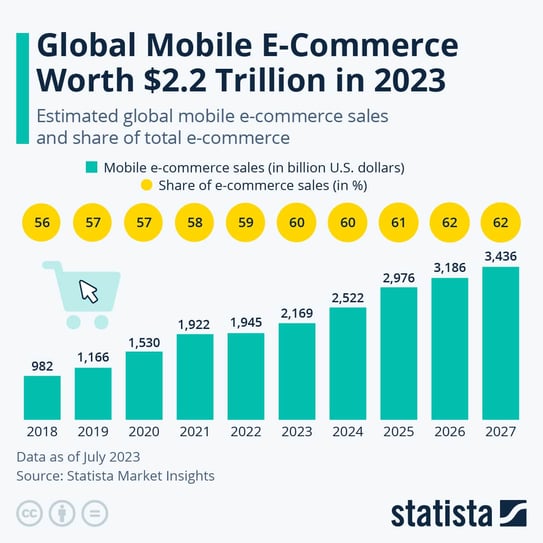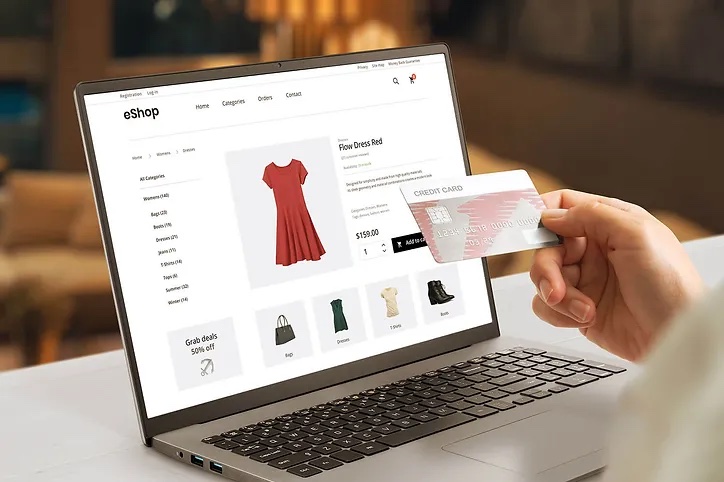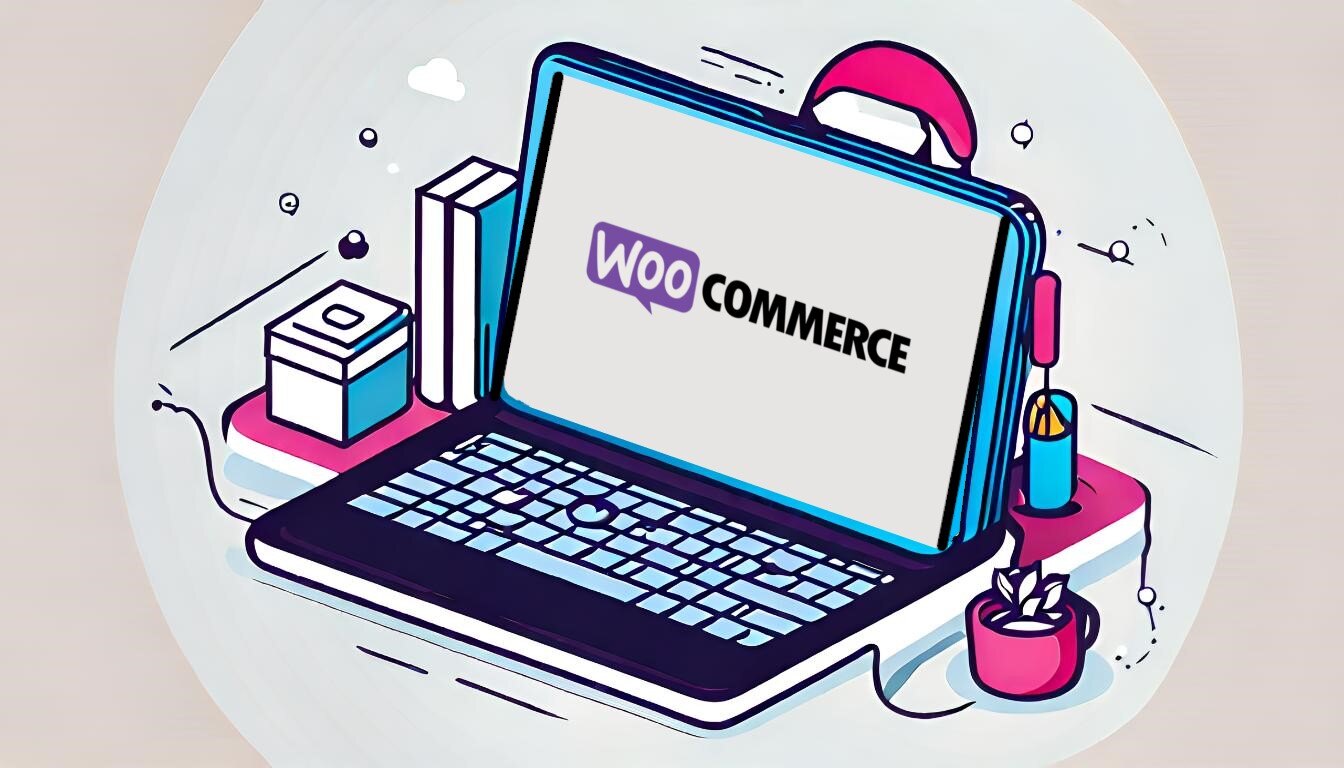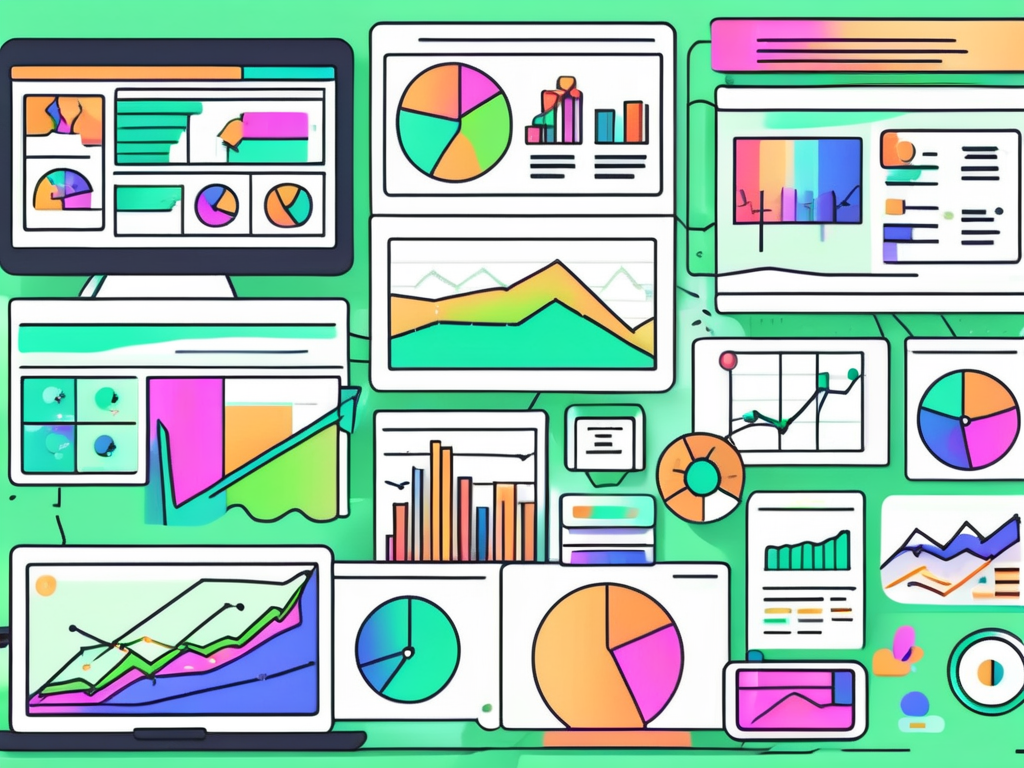Share this
7 Must-Haves When Scaling a Business
by Rin Mosher on Sep. 23, 2024

Growing an ecommerce business is exciting, but it also comes with new challenges that demand a strategic approach. To scale successfully, you need more than just good products – you need the systems, tools, and partnerships that can keep pace with your ambitions. By preparing your business to handle increased demand and customer expectations, you’ll not only maintain your current success but also unlock the potential for even greater achievements.
In this article, we’ll walk through the essential components that every fast-growing ecommerce brand should have in place. From a website that can handle demand to the optimal post-purchase experience, these must-haves will ensure your business is prepared for sustainable, long-term growth.
Can You Grow Too Fast for Your Own Good?
Year-over-year growth is the main metric used to evaluate a company’s success. Generally speaking, the faster an organization scales, the better. Rapid growth often translates to increased market share, higher profits, and enhanced brand recognition—the kind of success that entrepreneurs dream about when launching their ventures.
But here's the catch: growth isn't always synonymous with success. In fact, scaling too quickly can sometimes be detrimental to a business's long-term health. It's a paradox that many ecommerce entrepreneurs face – the very success they've worked so hard to achieve can become their biggest challenge.
Scaling too quickly without proper infrastructure can strain your resources, compromise product quality, and ultimately disappoint customers. This is especially true in ecommerce, where consumer expectations for fast shipping and seamless experiences are higher than ever.
Beating out competitors isn't merely a matter of sales but also a business' capacity to realize those sales end-to-end – so they reach customers without a hitch.
How to Know When Your Growth Poses a Risk to Success
The key to weathering rapid growth is being able to identify when it begins to pose a risk to your business. If you've reached this point, you've done a good job of satisfying customers' expectations so far.
Customer satisfaction metrics like Net Promoter Score (NPS) and customer retention rate should be closely monitored. It's also worth keeping an eye on your operational efficiency metrics, such as order fulfillment time, inventory turnover ratio, and return rate. These indicators can provide early warnings of potential issues arising from rapid growth.
Other examples of indicators that your growth might be outpacing your operational capacity include:
- Inventory Management Issues: Frequent stockouts or overstock situations may indicate that your inventory system isn't keeping up with demand fluctuations.
- Shipping Delays: If you're consistently missing shipping deadlines or receiving complaints about slow delivery, your fulfillment process might be overwhelmed.
- Employee Burnout: Are your team members working excessive overtime or showing signs of stress? This could mean you're understaffed for your current workload.
- Cash Flow Problems: Rapid growth often requires significant cash outlay. If you're constantly tight on funds despite increasing sales, it might be time to reassess your financial strategy.
- Technology Limitations: System crashes or slowdowns indicate that your current tech stack may not be robust enough to handle increased data and transactions.
Freedom and flexibility are the biggest business scaling must-haves of them all. Without either, you’re tied down in the number of orders you can take in, the opportunities you pursue, and the promotions you run. A lucrative future of limitless growth is yours if you’re ready to invest in the infrastructure and resources it requires.
7 Must-Haves for Scaling an Ecommerce Business
Apart from personal readiness for all of the change ahead, you’ll need a few tangible preparations in place before scaling an online store effectively.
1. A Website Ready to Handle Demand
Just like how a brick-and-mortar retailer wouldn’t be able to keep its doors open with a shortage of employees, your ecommerce store won’t be able to serve increased demand if it doesn’t have the server capacity to do so.
Needs vary depending on factors such as catalog size, user volume, and the amount of graphics on each page. According to development platform SitePoint, the average small to medium-sized ecommerce site will need between 10GB and 50GB of storage. But that’s a minimum. More is recommended to act as a buffer should traffic really soar.
Beyond server capacity, other technical considerations like site speed, user experience, and maintenance should be considered as well. Slow load times are among the top reasons for high user bounce rates. Similarly, cumbersome checkout processes increase the likelihood of customers abandoning carts. Proactively optimizing your site will minimize cart abandonment and other avoidable losses.
Content delivery networks (CDNs) are an easy first step. They speed up load times by distributing your website's static content (like images and CSS files) across a network of servers closer to the user’s location. Conducting regular testing on your own or with the help of a professional service provider should further help in identifying bottlenecks in customer registration, sign in, and checkout processes.
When working with developers to optimize the website's backend code, image sizes, and plugins, remember to keep mobile responsiveness in mind. It’s an absolute necessity considering the fact that over 60% of ecommerce sales were made via a mobile device in 2023.

2. Robust Analytics and Reporting Tools
Although data is always helpful to business owners, it becomes especially valuable with operational growth. Larger volumes of orders and more customers mean more comprehensive information upon which you can base strategic decisions.
Analytics are your compass in this expanded territory, offering insights into everything from product performance to customer lifetime value. Yet, data is only useful if you have the right reporting tools to analyze it and draw actionable conclusions.
Implement dashboards that track ecommerce and supply chain KPIs such as order fulfillment times, inventory levels, and customer service response rates in real time. The more up-to-date these tools are, the better positioned you’ll be to make adjustments when problems arise.
Shipment tracking will ensure customers feel kept in the loop about their order status. Detailed data on when packages reach different points in their journey makes getting ahead of and investigating easier, as well.
You can be even more proactive with predictive analytics tools, which use historical data to forecast sales, seasonal demand, and even churn rates for future inventory planning, staffing, and marketing budgets.
Gain deeper insights and improved decision-making by utilizing power BI dashboards and reports. These tools help you turn raw data into valuable information, which is essential for scaling your business effectively. Learning to create rich visualizations can support strategic decisions while minimizing inefficiencies.
3. A Strong Customer Service Team
Great customer service is a must-have no matter what stage of growth an ecommerce business is in. However, many scaling companies forget the need to ongoingly invest in and enlarge their support teams as they expand. Growing order volume without an increase in departmental capacity can open the door to lapses in service effectiveness, timeliness, and overall customer satisfaction.
Bolstering customer service doesn’t have to mean hiring and onboarding more human staff, however. Automation and Artificial Intelligence tools allow scaling businesses to reduce strain on agents by taking care of simpler tasks like answering frequently asked questions and creating support tickets.
Also consider building out the channels your company uses to help customers. Live chat, email, phone, and social media are all equally likely places buyers will turn when in need of support.
4. A Clear Returns Policy
Returns in the ecommerce industry are inevitable – to a degree. While every online store needs to deal with requests for refunds and exchanges, the number of inquiries one receives can be reduced with a clear policy.
Make your returns policy easy to find and understand. Clearly outline the conditions under which returns or exchanges are accepted, and provide step-by-step instructions on how to initiate a return.
Offering free returns or flexible return windows – especially for higher-priced items or first-time customers – can build trust and encourage repeat purchases. You might also offer incentives for exchanges or store credit to cut revenue loss.
Returns is yet another area where data analysis pays off. Data can uncover patterns in the return of specific product categories and SKUs. If a particular product sees a high return rate, it may indicate issues with the product page’s description, the sizing information it provides, or the item’s quality. Your in-house fulfillment or 3PL team should be able to assess individual cases and report on overall trends in reverse logistics.
5. An Optimal Post-Purchase Experience
Proactive efforts to ensure customers are taken care of post-purchase – like comprehensive support, consistent communication, and up-to-date shipment tracking information – enrich the buying experience and promote retention in doing so. Even better, you can use touch points after order confirmation to understand how customers perceive these efforts.
There’s no better way to know whether website updates, changes in policy, or service teams are performing to standard than by asking buyers directly. Post-purchase surveys are a great tool for analyzing feedback to identify both opportunities for innovation and areas of friction that might otherwise go unnoticed. Use them to ask targeted questions about the buying experience, product satisfaction, and shipping times to identify areas for improvement.
But don’t just wait for customers to provide feedback – proactively monitor social media platforms and forums where your products are discussed. Social listening tools like Brand24 and Brandwatch can help you identify trends and emerging issues before they make a measurable impact on metrics.
A strong feedback pipeline may also be able to support your brand's future success. Make the most of accurate, on-time orders by giving happy customers an easy way of sharing their positive experiences. Reviews, testimonials, and user-generated content are just a few examples of the kinds of powerful social proof that can come from great service. All you have to do is ask! Some businesses even incentivize feedback and retention with rewards like discounts on future purchases or entry into giveaways.
6. Reliable and Flexible Fulfillment From a 3PL
With more orders comes the need for more robust fulfillment. Similarly to customer service, performance in logistics can suffer without appropriate investments in infrastructure and staff. A single missed shipment can lead to frustrated customers, negative reviews, and lost revenue. Ensuring your fulfillment operations can scale with your business growth is vital to meeting growing demand and sustaining long-term success.
Third-party logistics (3PL) services are the easiest and most cost-effective solution to fulfillment at scale. Where in-house operations are limited in space, well-established logistics companies have infrastructure and resources ready to support massive spikes in demand without compromising performance.
The best 3PLs offer additional value through technology capable of providing real-time visibility into stock levels, order status, and more. You may even be able to reap cost savings if your fulfillment provider has existing high-volume relationships with shipping carriers.
Not all service providers are made equal, though, which is why you should research each option in-depth. Know what questions to ask a 3PL during the interview process while keeping business-specific 3PL criteria top of mind.
7. Readiness for Omnichannel Ecommerce Sales
Successful businesses get to where they are by thinking about future endeavors just as much as they do current ones. Whether you’re selling on one ecommerce platform or exploring social commerce channels and third-party marketplaces today, chances are that new opportunities will arise tomorrow. Put your company in a position to make the most out of omnichannel sales by choosing scalable infrastructure now.
Take order management, for instance. Does your current system have an integration for Walmart, an integration for TikTok Shop, and an integration for Amazon ready should those become avenues you choose to pursue? If not, it’s best to switch sooner rather than later on when volume is even higher.
This same logic applies when evaluating 3PLs. Fulfillment centers with experience in B2B and wholesale are particularly valuable because they’ll be able to seamlessly expand fulfillment operations should you decide to begin working with major retailers. It’s worth paying extra consideration to potential partners that offer solutions for subscription box programs and one-time special projects you may decide to launch down the line.
Shipfusion Empowers Ecommerce Businesses to Scale Without Limits
Partnering with a 3PL like Shipfusion means having instant access to high-level, large-scale performance – without the headaches fulfillment can bring. Our scalable fulfillment solutions empower our clients to keep growing their businesses, knowing their order fulfillment can always keep up.
The best part? Shipfusion’s skilled warehouse team and dedicated Account Managers maintain consistency at all levels, acting as your eyes, mouth, and ears on the warehouse floor. Benefit from invaluable peace of mind knowing that not sudden changes in inventory management preferences nor unexpected product virality will derail the efficiency of your business’ fulfillment operations.
Contact a specialist today to learn more about Shipfusion’s solutions tailored to rapidly growing ecommerce companies.
Share this
You May Also Like
These Related Articles

Product SEO: Best Practices for Ecommerce

Follow These Advanced Best Practices for WooCommerce Success

Top Ecommerce Key Performance Indicators to Track for Business Success
- April 2025 (18)
- March 2025 (26)
- February 2025 (26)
- January 2025 (37)
- December 2024 (16)
- November 2024 (23)
- October 2024 (22)
- September 2024 (27)
- August 2024 (9)
- July 2024 (8)
- June 2024 (5)
- May 2024 (8)
- April 2024 (8)
- March 2024 (6)
- February 2024 (6)
- January 2024 (5)
- December 2023 (3)
- November 2023 (3)
- October 2023 (5)
- September 2023 (4)
- August 2023 (2)
- July 2023 (1)
- June 2023 (4)
- March 2023 (2)
- October 2022 (1)
- September 2022 (5)
- August 2022 (4)
- July 2022 (7)
- June 2022 (4)
- May 2022 (4)
- April 2022 (6)
- March 2022 (2)
- February 2022 (1)
- January 2022 (3)
- December 2021 (2)
- November 2021 (4)
- October 2021 (2)
- September 2021 (5)
- August 2021 (4)
- July 2021 (4)
- June 2021 (3)
- May 2021 (2)
- April 2021 (3)
- March 2021 (3)
- February 2021 (3)
- January 2021 (2)
- December 2020 (4)
- November 2020 (2)
- October 2020 (4)
- September 2020 (2)
- July 2020 (5)
- June 2020 (4)
- May 2020 (2)
- April 2020 (2)
- March 2020 (4)
- February 2020 (1)
- December 2019 (1)
- May 2018 (1)
- March 2018 (2)
- February 2018 (3)
- January 2018 (3)
- November 2017 (3)
- July 2017 (4)
- March 2017 (3)
- February 2017 (5)
- January 2017 (3)
- December 2016 (4)
- November 2016 (6)
- October 2016 (6)
- October 2015 (1)
- September 2015 (1)
- June 2015 (3)
- May 2015 (3)
- August 2014 (1)
- July 2014 (1)
- March 2014 (1)
- February 2014 (1)